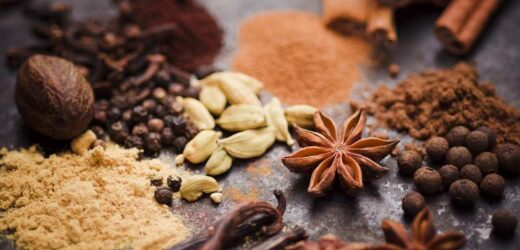PEOPLE who have diabetes can struggle to keep their blood sugar levels under control.
When you're diabetic your body can struggle to produce enough insulin or the insulin isn't effective.
With type 1 diabetes, a person’s pancreas produces no insulin, but in type 2, cells in the body become resistant to insulin, so a greater amount of insulin is needed to keep blood glucose levels within a normal range.
But experts have found that a cheap Christmas spice could actually help lower your blood sugar levels and help you manage your diabetes.
A study published by experts at the American Diabetes Association found that eating just a small amount of cinnamon a day can help regulate your blood sugar.
It's important to note that just one ingredient alone won't do this and that you need to maintain a healthy/balanced lifestyle and monitor your glucose levels if you're a diabetic.
Keeping a healthy, balanced diet, not smoking and making sure you get enough exercise are all key.
Published in Diabetes Care, the experts said that 1, 3, or 6 g of cinnamon per day reduces serum glucose, triglyceride, LDL cholesterol, and total cholesterol in people with type 2 diabetes.
Most read in Health
MIXED MESSAGES Brits go into lockdown as Omicron forces Xmas choice between mates & family
Covid cases hit ANOTHER record high with 93k infected as Omicron fuels surge
Man reveals how fast lateral flow tests turn positive as Omicron spreads
Restaurants already forced to close as Omicron cases surge across Britain
They said that this suggests that the inclusion of cinnamon in the diet of people with type 2 diabetes will reduce risk factors associated with diabetes and cardiovascular diseases.
They explained that people with type 2 diabetes are at a heightened risk of cardiovascular disease.
"Although the causes of type 2 diabetes and cardiovascular diseases are multifactorial, diet definitely plays a role in the incidence and severity of these diseases.
"The dietary components beneficial in the prevention and treatment of these diseases have not been clearly defined, but it is postulated that spices may play a role.
"Spices such as cinnamon, cloves, bay leaves, and turmeric display insulin-enhancing activity in vitro", the said.
The experts also added that botanical products can improve glucose metabolism and the overall condition of individuals with diabetes not only by hypoglycemic effects but also by improving lipid metabolism, antioxidant status, and capillary function.
ALL THE TRIMMINGS
WW nutritionist Jess O'Shea said we all tend to overindulge at Christmas, but for people living with diabetes, it can be a tricky period to navigate, with blood sugar busting sweet treats available at every turn and an endless stream of canapés, not to mention your mum/auntie/gran’s homemade Christmas pudding.
She said that Christmas is no reason to panic for diabetes and highlighted some foods that anyone living with diabetes can enjoy over Christmas.
Jess said that Turkey is the beat meat choice for your Christmas dinner rather than hams that may have been glazed – which contain extra sugars.
She also highlighted beans as another food to tuck into and suggested mashing your potatoes and add in some smashed white beans.
"They are high in fibre and protein and are low on the glycemic index, which means they won’t cause your blood sugar levels to rocket. According to the NHS, beans and pulses reduce your risk of contracting type 2 diabetes", she said.
Jess added that both sprouts and poached fruit are great Christmas staples that you can enjoy.
For those who like a tipple at Christmas, Jess said to opt for gin instead of wine.
She said: "Avoid wine, champagne and beer in favour of spirits such as gin and rum, with a no-sugar mixer, lots of ice plus some sliced lemon or lime.
"Beer contains maltose, which has an even higher glycemic index than cane sugar, cocktails should be avoided due to their high sugar content and while wine has a very low glycemic index score, distilled drinks like vodka and gin, contain only a trace of carbohydrates.
"Don’t overdo it and try to drink a glass of water after each alcoholic drink."
What shouldmy blood sugar be?
Diabetics are urged to monitor their sugar levels and if you’re diabetic it’s likely you will have been given a device so you can do this at home.
You will be told what your average blood sugar level is and this is referred to as your HbA1c level.
While they differ for everyone, the NHS says that if you monitor your levels at home then a normal target is 4 to 7mmol/l before eating and under 8.5 to 9mmol/l 2 hours after a meal.
If it's tested every few months then a normal HbA1c target is below 48mmol/mol (or 6.5% on the older measurement scale).
It's important to not confuse high blood sugar with hypoglycaemia, which is when a person's blood sugar level drops too low, the NHS states.
The condition can impact both people with type 1 and type 2 diabetes as well as pregnant women with gestational diabetes.
It can sometimes affect people who don't have diabetes, but this will usually be in people who have recently had a heart attack or stroke.
There are many symptoms of high blood sugar and one of the most prominent is an increased thirst and dry mouth.
Other symptoms include tiredness, blurred vision, unintentional weight loss, tummy pain or feeling or being sick.
Esther Walden, Senior Clinical Advisor at Diabetes UK said that if you’re living with type 2 diabetes, managing your blood sugar levels is important in keeping healthy day-to-day, as well as reducing your risk of serious long-term complications such as heart disease, sight loss and stroke.
She said: "For some people with the condition, losing weight can help with managing blood sugar levels, but it’s important to remember that there’s no one size fits all ‘diet for diabetes'.
"The best approach for anyone with type 2 diabetes looking to make lifestyle changes is to find a healthy, balanced diet that works for you, that you can stick to in the long-term.
“When it comes to type 2 diabetes, variety – not cinnamon – is the spice of life."
She said that choosing wholegrain carbohydrates such as wholegrain pasta and bread , eating more fruit and veg, opting for healthier fats like rapeseed, sunflower and olive oil, as well as eating less salt, less red and processed meat are great ways to start.
"It’s important to note that having diabetes doesn’t mean you have to have a completely sugar-free diet, and you can still enjoy a wide variety of foods.
“Whatever you decide, it's important to talk it through with your healthcare team first, so that any impact on your blood sugar levels and medication can be monitored, and support can be provided. For more information on how to make healthy diet choices with type 2 diabetes, visit the diabetes.org.uk.”
Source: Read Full Article







